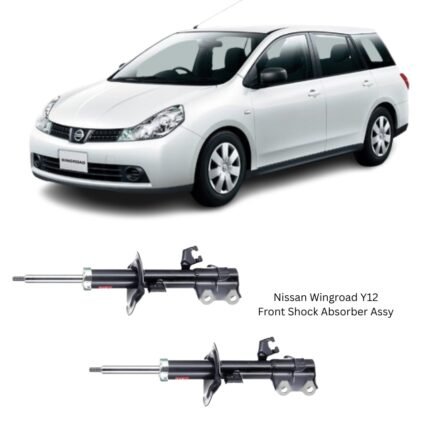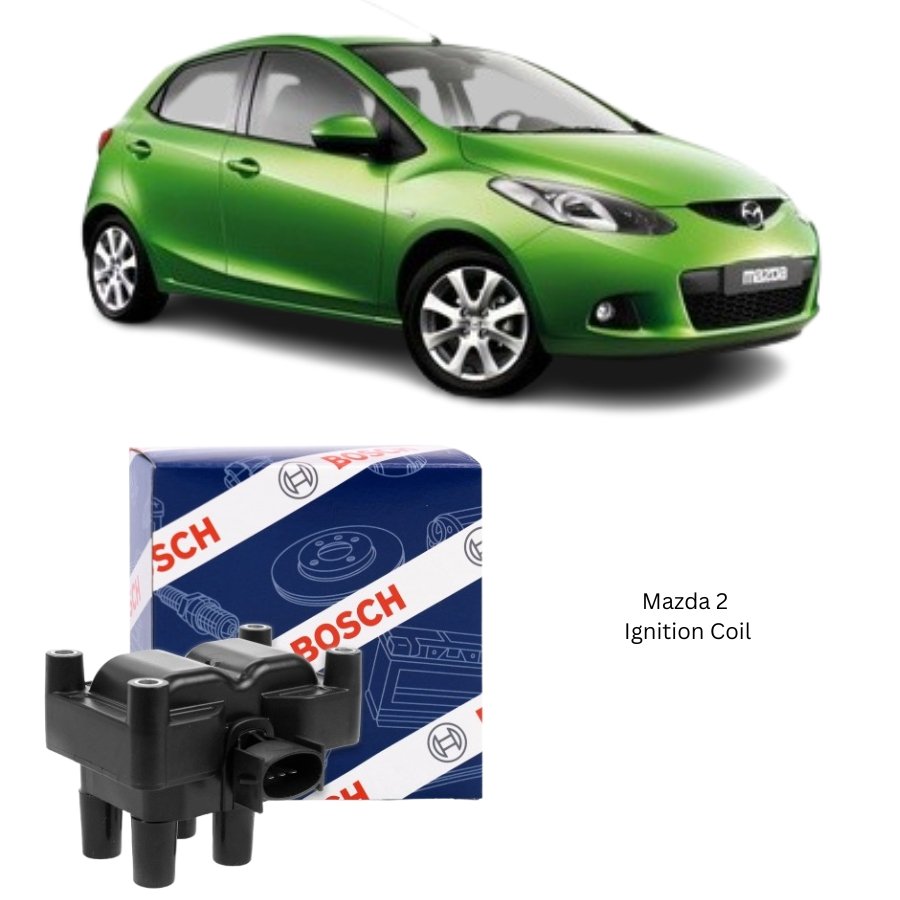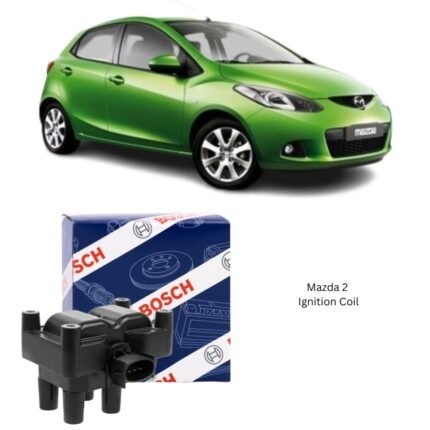Get Mazda 2 Ignition Coil 0221503490 in Kenya
The ignition coil is a vital component within the ignition system of an internal combustion engine. Its primary role is to transform the relatively low voltage supplied by the vehicle’s battery into the high voltage required to create a spark at the spark plug. This spark initiates the combustion process inside the engine’s cylinders, enabling efficient power generation and smooth operation. Without a properly functioning ignition coil, the engine would struggle to start, misfire during operation, or fail to run entirely.
Function of the Ignition Coil
The ignition coil essentially acts as a miniature electrical transformer. The battery in a vehicle typically provides around 12 volts of direct current. This voltage is insufficient to jump the gap between the electrodes of a spark plug under the high compression of the air-fuel mixture inside the cylinder. To overcome this, the ignition coil steps up the voltage to a much higher level, often in the range of 20,000 to 40,000 volts or more, depending on the engine design.
The high-voltage output is delivered precisely at the right time during the engine cycle. Controlled by either the ignition module or the engine control unit (ECU), the ignition coil ensures that the spark occurs at the exact moment necessary for optimal combustion. This precision enhances fuel efficiency, reduces emissions, and maximizes engine performance.
Construction and Design
An ignition coil is composed of several key parts:
-
Primary Coil – This winding is made up of a relatively small number of thick copper wire turns. It is directly connected to the battery and is responsible for building up the magnetic field when current flows through it.
-
Secondary Coil – This winding consists of thousands of turns of thinner copper wire. It is wound around the same core as the primary coil. When the magnetic field in the primary coil collapses, it induces a much higher voltage in the secondary coil, which is then delivered to the spark plug.
-
Iron Core – At the center of the coil is an iron core that concentrates the magnetic field and improves the efficiency of voltage transformation.
-
Insulation and Housing – Since the ignition coil operates with very high voltages, robust insulation materials and durable housing are necessary to prevent arcing and protect it from heat, vibration, and moisture.
Different coil designs exist, including conventional canister coils, coil packs, and coil-on-plug systems. Each design serves the same purpose but varies in application depending on the engine layout and modern technological advancements.
Role in Engine Performance
A properly functioning ignition coil is critical for the performance and reliability of an engine. By providing a strong and consistent spark, the ignition coil ensures complete combustion of the air-fuel mixture. This leads to:
-
Smooth Engine Operation – Minimizing misfires and ensuring stable idling.
-
Efficient Fuel Use – Better combustion reduces fuel wastage, improving mileage.
-
Lower Emissions – Complete burning of fuel means fewer unburned hydrocarbons are released into the environment.
-
Reliable Starting – Even in cold conditions, a strong ignition spark allows the engine to fire up quickly.
Signs of a Faulty Ignition Coil
Over time, ignition coils can degrade due to heat, electrical stress, or physical damage. Some common symptoms of a failing ignition coil include:
-
Engine Misfires – Irregular or weak sparks can cause cylinders to misfire, leading to rough running or loss of power.
-
Hard Starting – A weak coil may struggle to generate the required spark, making the engine difficult to start.
-
Poor Fuel Economy – Incomplete combustion caused by weak sparks results in increased fuel consumption.
-
Illuminated Check Engine Light – Modern vehicles monitor ignition system performance and trigger fault codes if the coil output is abnormal.
-
Backfiring or Rough Idling – Disrupted combustion cycles may lead to unusual exhaust noises or unstable engine speed at idle.
Causes of Coil Failure
Ignition coils operate under demanding conditions, and several factors can shorten their service life:
-
Heat and Vibration – Constant exposure to high temperatures and engine vibrations can break down insulation and internal windings.
-
Moisture and Oil Contamination – Exposure to water, oil leaks, or dirt can lead to short circuits or corrosion.
-
Worn Spark Plugs or Leads – If spark plugs are not replaced on schedule, they can cause excessive resistance, putting strain on the coil.
-
Electrical Overload – Voltage spikes from faulty wiring or alternator issues can damage coil windings.
Maintenance and Care
While ignition coils are generally designed to last many years, certain practices can extend their lifespan and ensure reliable performance:
-
Regular Inspection – Periodically check the coil for cracks, corrosion, or carbon tracking.
-
Keep Spark Plugs Healthy – Replacing spark plugs at recommended intervals reduces the workload on the coil.
-
Protect Against Moisture – Ensuring that coil housings, seals, and ignition components are dry helps prevent shorts.
-
Address Oil Leaks Promptly – Prevent oil from seeping into the ignition coil area, as it may damage insulation and connectors.
-
Monitor Warning Signs – Responding quickly to misfires or engine warning lights can prevent further damage to the coil and catalytic converter.
Advantages of Modern Ignition Coils
Advancements in ignition technology have led to more efficient and compact coil designs. Modern coil-on-plug systems, for example, mount a separate coil directly on top of each spark plug. This eliminates the need for high-voltage spark plug wires and reduces energy losses. The benefits of modern coils include:
-
Higher voltage output for cleaner combustion.
-
Reduced chances of crossfire between spark plug leads.
-
Improved durability and reduced maintenance needs.
-
More precise timing controlled by electronic ignition systems.
Importance in the Overall Ignition System
The ignition coil is not a standalone part; it works in harmony with other ignition components such as the spark plugs, ignition module, and engine control unit. When combined, these parts form a system that dictates how efficiently and cleanly an engine runs. Neglecting the health of the ignition coil can cascade into other issues such as catalytic converter failure, increased emissions, and reduced engine longevity.
Follow us on Facebook for more parts.





Reviews
Clear filtersThere are no reviews yet.